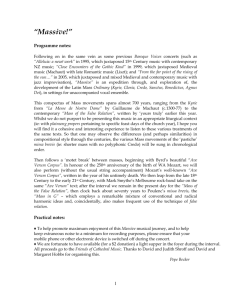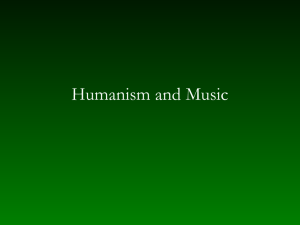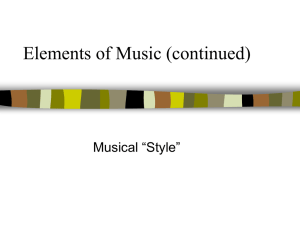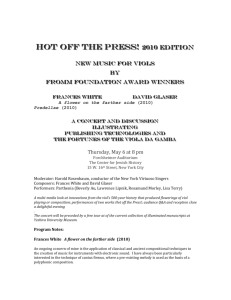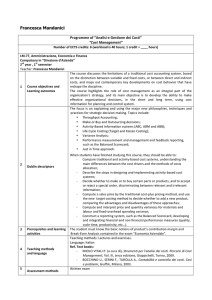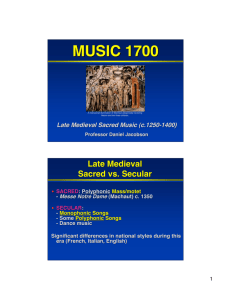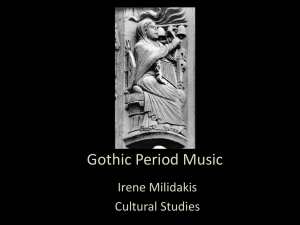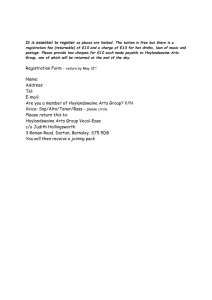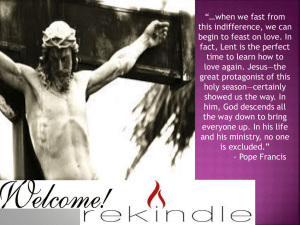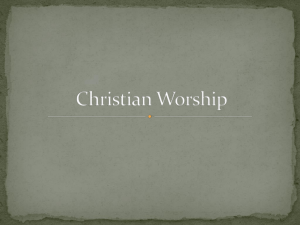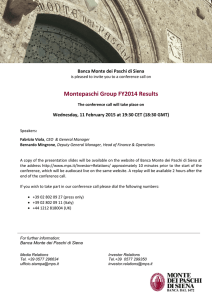September 19, 2013 Middle Ages / Medieval Music (500
advertisement
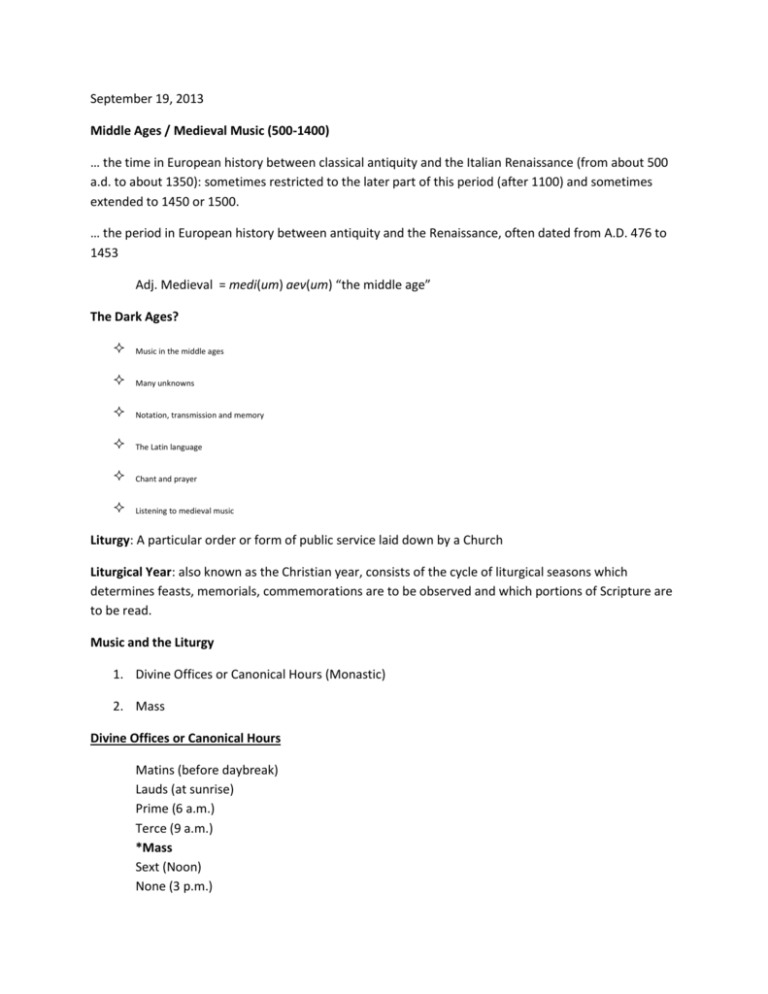
September 19, 2013 Middle Ages / Medieval Music (500-1400) … the time in European history between classical antiquity and the Italian Renaissance (from about 500 a.d. to about 1350): sometimes restricted to the later part of this period (after 1100) and sometimes extended to 1450 or 1500. … the period in European history between antiquity and the Renaissance, often dated from A.D. 476 to 1453 Adj. Medieval = medi(um) aev(um) “the middle age” The Dark Ages? Music in the middle ages Many unknowns Notation, transmission and memory The Latin language Chant and prayer Listening to medieval music Liturgy: A particular order or form of public service laid down by a Church Liturgical Year: also known as the Christian year, consists of the cycle of liturgical seasons which determines feasts, memorials, commemorations are to be observed and which portions of Scripture are to be read. Music and the Liturgy 1. Divine Offices or Canonical Hours (Monastic) 2. Mass Divine Offices or Canonical Hours Matins (before daybreak) Lauds (at sunrise) Prime (6 a.m.) Terce (9 a.m.) *Mass Sext (Noon) None (3 p.m.) Vespers (sunset) Compline MASS 1. Ordinary: Those texted parts of the Mass that are repeated at each service. Kyrie A: Kyrie eleison B: Christe eleison A: Kyrie eleison Gloria Credo Sanctus A: Sanctus, Sanctus, Sanctus… B: Pleni sunt caeli et terra… B’: Benedictus qui venit… Agnus Dei A: Agnus Dei…miserere nobis A’: Agnus Dei…miserere nobis A: Agnus Dei…dona nobis pacem Ite, missa est 2. Proper: Those texted parts of the Mass that change to suit a particular day in the liturgical year (i.e., Advent, Christmas, Lent, Easter, etc.) Example: Hildegard of Bingen (1098-1179): Alleluia, O virga mediatrix (Alleluia, O mediating branch) http://www.youtube.com/watch?v=j-xhStMloyo Polyphony: “Many sounds”. Music that simultaneously combines several lines, as distinct from monophony, which consists of a single melody. Organum: Medieval polyphony, most often based on a plainchant. Initially improvised, organum became increasingly characterized by one or more “composed” melodies set against the original melody (or cantus firmus). Parallel – voices move in parallel Oblique – one voice holds a note, almost like a drone Contrary – voices move in contrary directions or mirror image. 14th Century and Ars nova General Historical Events And Their Implications • Papal Schism (1378-1417) • One Hundred Years’ War (1337-1453) • Black Death (1344-50) Literature and Art • Dante’s Divine Comedy (1307?) • Boccaccio’s Decameron (1353) • Chaucer, Canterbury Tales (ca. 1390) Ars nova rhythm/metre Guillaume de Machaut (1300-77) Different coloured ink can be used to indicate changes of metre, from perfect (3) to imperfect (2 or 4). Renaissance • Printing Press • Reformation (Martin Luther (1483-1546) • The New World Printed Music Ottaviano Petrucci (1466-1539): Missarum diversorum autorum, liber 1 (1508), Superius part Music printing with moveable type is was a three-part process: 1. Staves 2. Notes 3. Text Josquin des Prez (ca. 1440-1521) Compositions and Style: Motets Example: Josquin, motet, Ave Maria … virgo serena Masses Settings of the Ordinary in various ways Cantus firmus or Tenor Mass: Placed the same melody in the tenor voice of each movement. Thus called the cantus firmus Mass or tenor Mass Late Renaissance and Counter-Reformation 1. Giovanni Pierluigi da Palestrina (1525-1594) 2. Orlando di Lasso (c. 1532-1594) 3. William Byrd (1543-1623) The Madrigal o Most progressive musical genre after the Counter-Reformation o Secular o Usually 4-6 solo voice parts o Usually unaccompanied o Usually on amorous texts of very high quality o Makes use of word-painting or madrigalisms to portray the text
